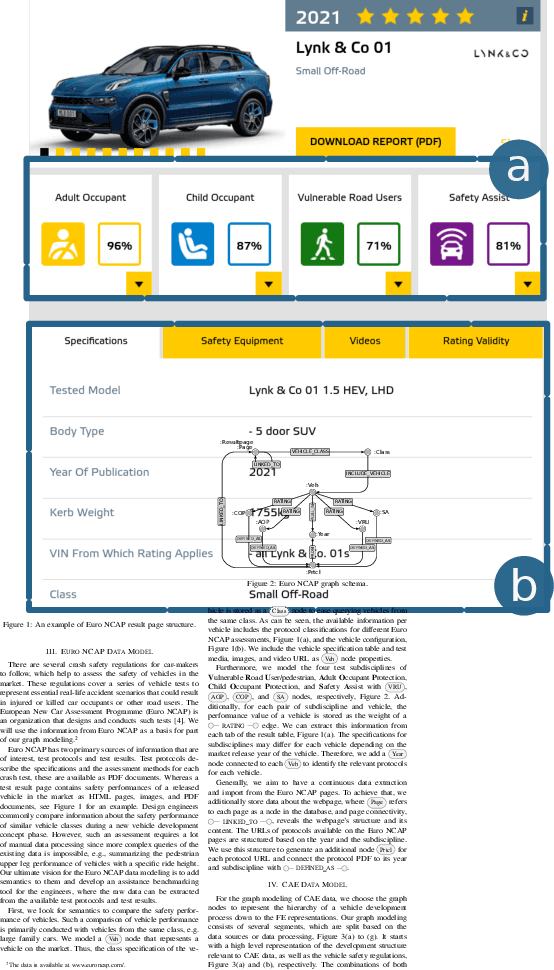Anahita Pakiman
Graph Extraction for Assisting Crash Simulation Data Analysis
Jun 15, 2023Abstract:In this work, we establish a method for abstracting information from Computer Aided Engineering (CAE) into graphs. Such graph representations of CAE data can improve design guidelines and support recommendation systems by enabling the comparison of simulations, highlighting unexplored experimental designs, and correlating different designs. We focus on the load-path in crashworthiness analysis, a complex sub-discipline in vehicle design. The load-path is the sequence of parts that absorb most of the energy caused by the impact. To detect the load-path, we generate a directed weighted graph from the CAE data. The vertices represent the vehicle's parts, and the edges are an abstraction of the connectivity of the parts. The edge direction follows the temporal occurrence of the collision, where the edge weights reflect aspects of the energy absorption. We introduce and assess three methods for graph extraction and an additional method for further updating each graph with the sequences of absorption. Based on longest-path calculations, we introduce an automated detection of the load-path, which we analyse for the different graph extraction methods and weights. Finally, we show how our method for the detection of load-paths helps in the classification and labelling of CAE simulations.
Graph Modeling in Computer Assisted Automotive Development
Sep 29, 2022
Abstract:We consider graph modeling for a knowledge graph for vehicle development, with a focus on crash safety. An organized schema that incorporates information from various structured and unstructured data sources is provided, which includes relevant concepts within the domain. In particular, we propose semantics for crash computer aided engineering (CAE) data, which enables searchability, filtering, recommendation, and prediction for crash CAE data during the development process. This graph modeling considers the CAE data in the context of the R\&D development process and vehicle safety. Consequently, we connect CAE data to the protocols that are used to assess vehicle safety performances. The R\&D process includes CAD engineering and safety attributes, with a focus on multidisciplinary problem-solving. We describe previous efforts in graph modeling in comparison to our proposal, discuss its strengths and limitations, and identify areas for future work.
* ICKG 2022
 Add to Chrome
Add to Chrome Add to Firefox
Add to Firefox Add to Edge
Add to Edge